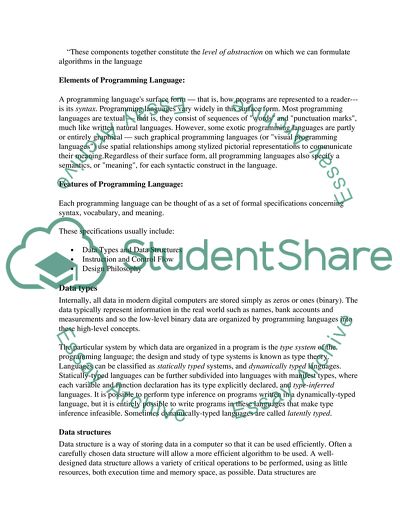Cite this document
(“The Overview of Programming Languages Essay Example | Topics and Well Written Essays - 1000 words”, n.d.)
Retrieved from https://studentshare.org/information-technology/1536571-the-overview-of-programming-languages
Retrieved from https://studentshare.org/information-technology/1536571-the-overview-of-programming-languages
(The Overview of Programming Languages Essay Example | Topics and Well Written Essays - 1000 Words)
https://studentshare.org/information-technology/1536571-the-overview-of-programming-languages.
https://studentshare.org/information-technology/1536571-the-overview-of-programming-languages.
“The Overview of Programming Languages Essay Example | Topics and Well Written Essays - 1000 Words”, n.d. https://studentshare.org/information-technology/1536571-the-overview-of-programming-languages.


